Innovations in connected and autonomous mobility were highlighted this year at the CES 2024 Show, Jan. 9-12 in Las Vegas, NV. Owned by the Consumer Technology Association (CTA), CES showcases consumer technologies in various product categories, including artificial intelligence, augmented and virtual reality, robotics, smart cities and vehicle technology. More than 135,000 attendees had the opportunity to see the latest tech trends on display from more than 4,300 exhibitors.
Show organizers said CES is one of the world’s largest and fastest-growing auto mobility and transportation events. With more than 600 mobility exhibits, showgoers could view the future of autonomous and electric vehicles, micro-mobility, software-defined vehicles (SDVs) and flying cars, as well as assistive mobility and safety systems.
Automotive exhibitors included BMW, Honda, Hyundai, Kia, Magna, Mercedes-Benz, Paccar, Recaro, Sony, Supernal, Togg and VinFast.
Several announcements were made by automakers throughout the week. Honda introduced the "Honda 0 Series," a new EV series launching in 2026; Kubota showcased the new fully electric, multi-purpose Agri Concept vehicle; and VinFast unveiled VF WILD, a new electric pickup truck concept vehicle.
“We’ve seen huge growth in the automotive and mobility area at CES, not only what you expect with mobility with cars, but we’re seeing it on land, air and sea,” said Gary Shapiro, CTA’s president and CEO.
Automotive-focused presentations were also held during the show in the areas of accessibility, self-driving, air taxis and the future of electrification.
Edward Wilford, senior principal analyst for applied intelligence at Omdia, moderated a panel discussion, “Cracking the Smart Car: What Truly Defines Them.”
“No industry has undergone transformation quite like automotive, and the process is still ongoing by many measures,” said Wilford.
He said the smart car is advancing on all fronts. According to Omdia, there is an expected 20% annual compound annual growth rate (CAGR) from 2022-2028, with almost 1 billion edge AI devices shipping into automotive in 2028.
Wilford shared forecasts from Wards Intelligence, which estimates the total number of connected cars on the road worldwide will grow from 252 million in 2021 to 1.23 billion in 2034, equating to a 388% growth.
According to preliminary results from a Wards Intelligence and NXP 2024 SDV survey, Wilford said 72% of the industry predicts half of all vehicle sales in established markets will be SDVs by 2033.
Autobody News talked to some CES 2024 exhibitors and participants to discuss what they displayed and how technology will impact the collision repair industry.
Ambarella
Ambarella demonstrated its latest developments in autonomous vehicle (AV) technology, including its Centrally Processed 4D Imaging Radar Architecture for Autonomous Mobility Systems, which received a CES® 2024 Innovation Award.
“We are honored to be recognized with the prestigious award,” said Steven Hong, vice president and general manager of Radar Technology at Ambarella.
The award recognized the company’s investment and innovation in pioneering centralized 4D imaging radar processing, which Hong said enables significantly higher-performance radar systems through the combination of the company’s Oculii™ artificial intelligence (AI) radar technology and CV3-AD AI domain control system-on-chip (SoC) family.
“Combining these elements with our industry-leading camera and AI processing performance yields a complete solution for automotive manufacturers and their Tier 1 suppliers that can address all aspects of autonomous vehicles, from the L2+ to L4 levels of autonomy,” he explained.
Hong said Ambarella’s Oculii radar technology uses AI software to enable greater angular resolution performance, providing LIDAR-like point cloud density and longer-range radar sensing.
“We do this by using AI to dynamically adapt the radar waves to the environment around the vehicle in real-time while also reducing the antenna count and data size," he explained. “This breakthrough in radar sensing technology enables us to change the current vehicle sensing system setup, which places a radar processor in each imaging radar module.”
“For the auto body industry, this innovation will provide a significant benefit to customers with 4D imaging radar sensors in their vehicles, as these radar modules are typically installed behind the bumper in several different locations,” Hong said. “Because Ambarella’s centralized radar technology enables radar heads without any processor inside, the cost of replacing those processor-less radar modules after an accident can be greatly reduced.”
ARaymond
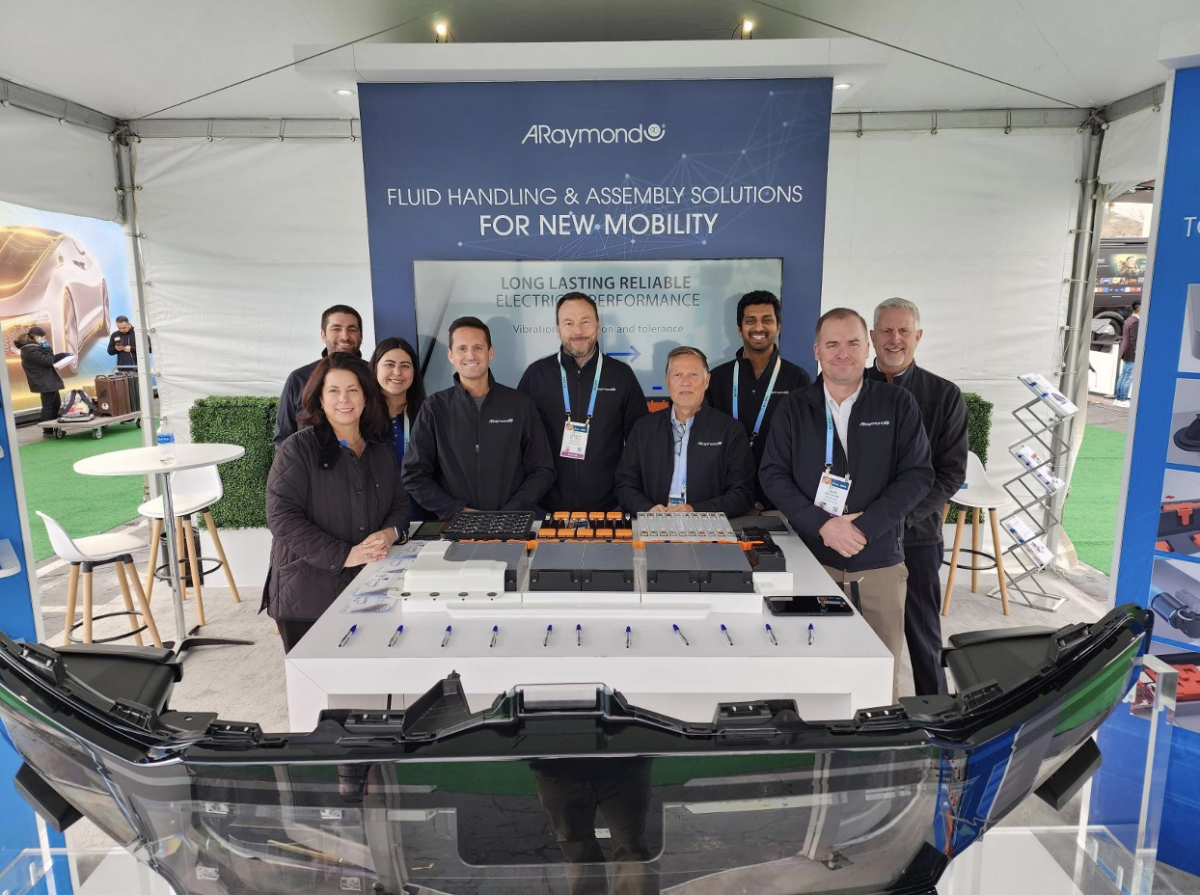
ARaymond shared its fastening, electrical connection and cleaning systems solutions for future vehicle needs. The fastening department displayed wire harness and tube routing fasteners, as well as high strength clipping solutions for various EV applications. The cleaning systems group showcased sensor and camera cleaning system components and assemblies to demonstrate innovations made in that growing field.
“ARaymond is using its fastening and electrical connection experience to improve the assembly and safety of inter-battery electrical connections by removing loose fasteners and creating robust connections that surpass vehicle life,” said Larry Rachow, cleaning systems manager at ARaymond North America.
Daniel Marin, business development manager for Mobility/EV Solutions, ARaymond North America, said the current automotive market is shifting with the huge push for EVs or electrification and challenges are becoming apparent with new or different assemblies being added to vehicles.
“As electric vehicles are ramping up in volumes on the market, there is a greater need for simplified assembly techniques and serviceability aspects that are challenging the standard way vehicles are constructed,” said Marin. “ARaymond is constantly capturing the trends in the mobility market to develop assembly solutions that not only improve the assembly efficiency, but also simplify servicing these parts.”
He said vehicle designs are going toward lightweight, simple designs that are simple and fast to assemble while keeping in mind the need for service down the road.
“There are changes happening, but when it comes to vehicle design, current architecture is being used as a baseline and improvements are being made to accommodate newly integrated components,” he said.
OWL Autonomous Imaging
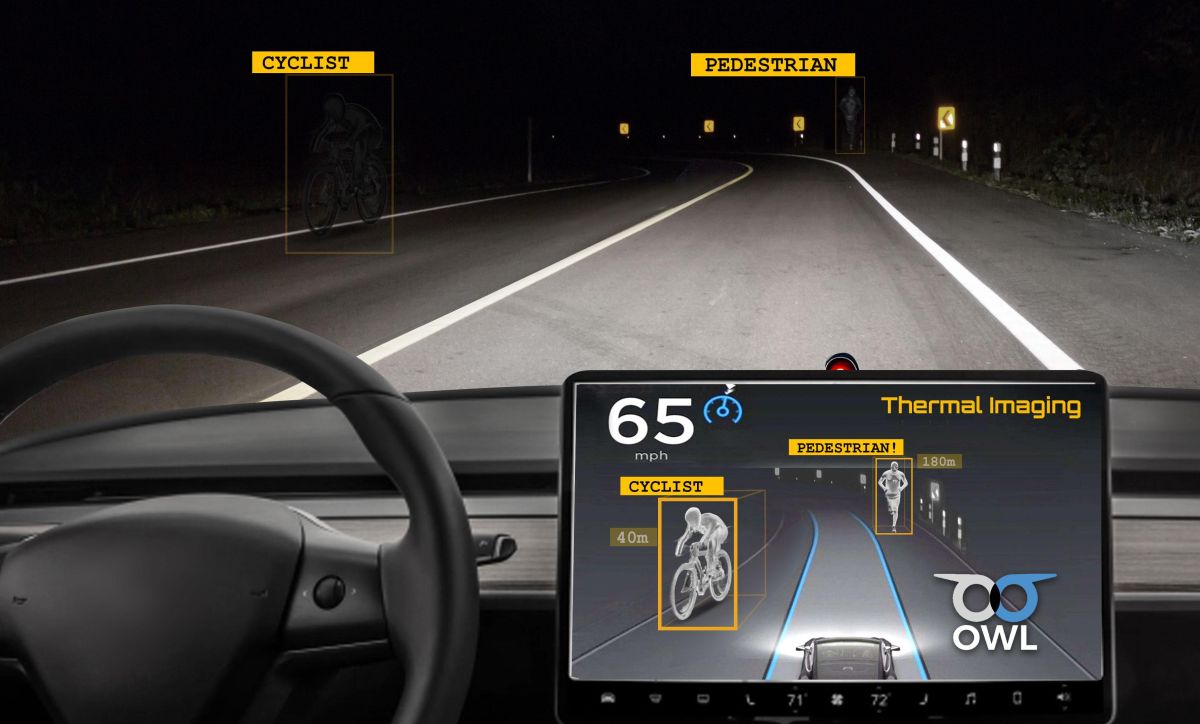
OWL Autonomous Imaging demonstrated its Advanced Driver-Assistance Systems (ADAS) safety technology for nighttime pedestrian automatic emergency braking (PAEB). It combines the company’s new digital high-definition thermal camera with artificial intelligence software trained to find pedestrians and measure their distances from the car.
“This combination provides ADAS computers with the information they need to avoid collisions day or night, even when the road ahead is obscured by rain or snow, fog or smoke,” said Chuck Gershman, CEO of OWL AI.
Gershman said the ideal position for a forward-looking thermal camera is behind the rear-view mirror.
“Since the infrared radiation detected by thermal cameras will not pass through glass, new windshields have been developed that include a small infrared transmitting insert in front of the camera,” he explained. “If the windshield must be replaced after a collision, this specific type must be used.”
Gershman said pedestrian injury and fatality statistics show three-quarters of incidents occur at night.
“NHTSA has addressed this situation by issuing a proposed rule that requires light vehicles to be able to automatically brake to avoid pedestrian collisions both day and night,” he said.
Although daytime performance of pedestrian detection systems has been shown to be satisfactory, Gershman said the rule essentially requires identification and implementation of technologies that operate well at night.
“NHTSA does not specify how to solve the problem but intends to require implementation by roughly the 2029 model year,” he said. “European regulators are planning to include similar requirements in their vehicle testing beginning in about 2034.”
With significant changes taking place in automotive electronics, Gershman said future vehicles are expected to have fewer but more powerful computers that control zones or related groups of operations.
“These computers include the capability to run AI software to support a variety of ADAS functions like lane keep, sign-reading and PAEB,” he said. “In the future, vehicle-to-vehicle communications will further expand a car's ability to sense and interpret its situation.”
Until recently, Gershman said regulators and automakers have focused their safety efforts on protecting people inside vehicles, improving passenger protection and developing systems to assist drivers in avoiding collisions.
“New efforts have shifted to protecting those outside the vehicles designation—vulnerable road users (VRUs) like pedestrians, cyclists and operators of unenclosed vehicles,” he explained. “Protecting VRUs essentially requires collision avoidance rather than collision survival due to the large discrepancy between vehicle and VRU size.”
He added that avoidance requires assisting the driver and, in many cases, automatic response by the vehicle. Driver assistance and automatic response are functions of ADAS, which are expected to grow more capable as object detection and vehicle intelligence improve.
Sony Honda Mobility
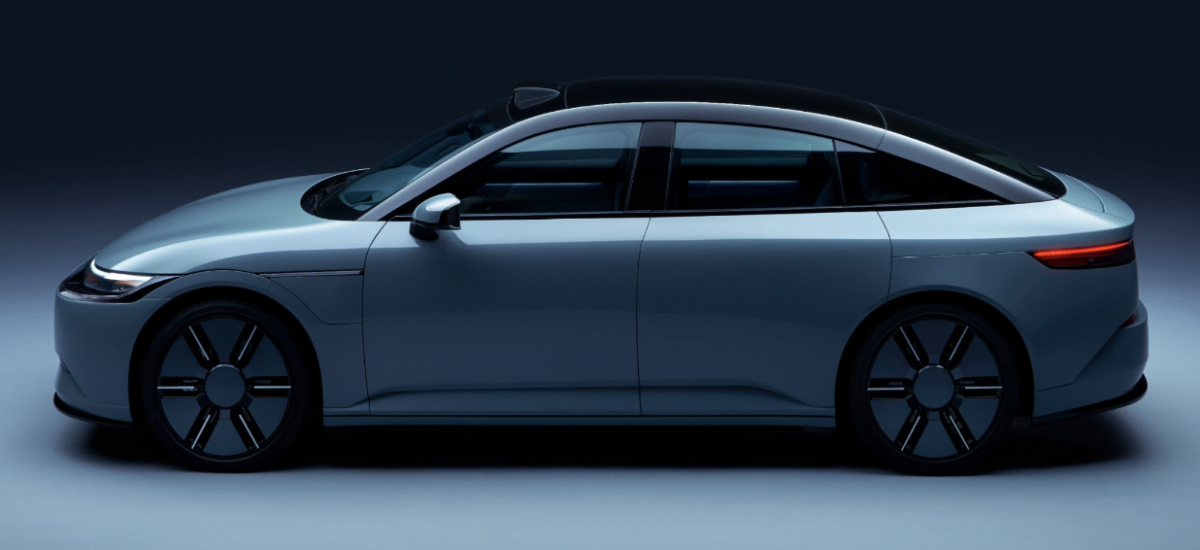
Sony Honda Mobility (SHM) exhibited its prototype vehicle, AFEELA, which is currently in the development stage for mass production.
The prototype was introduced last year following Sony and Honda announcing their partnership to sell EVs under the name Sony Honda Mobility. The four-door sedan is expected to be produced at one of Honda’s 12 plants in the U.S.
The company said AFEELA’s overall styling concept is based on movement, color and sharpness, while reflecting fidelity for mass production.
According to a company representative, “The AFEELA prototype invokes mobility that people can feel as an intelligent entity through new technology.”
During the show, Representative Director, President and COO Izumi Kawanishi discussed the company’s focus on "AI for ADAS" and "Mobility as a Creative Entertainment Space,” based on the relationship between people and mobility.
SHM also announced its collaboration with Epic Games and unveiled technology that can simulate external environmental conditions such as information from other vehicles, pedestrians, terrain and weather. By combining this technology with augmented reality (AR), the company said users will have an immersive experience that enhances safety.
The company said AFEELA will include “hardware worthy of a premium brand, cutting-edge AD/ADAS and entertainment as a further emotional space.”
In addition, SHM is collaborating with Microsoft to develop a conversational personal agent that uses the Azure OpenAI Service.
Squad Mobility
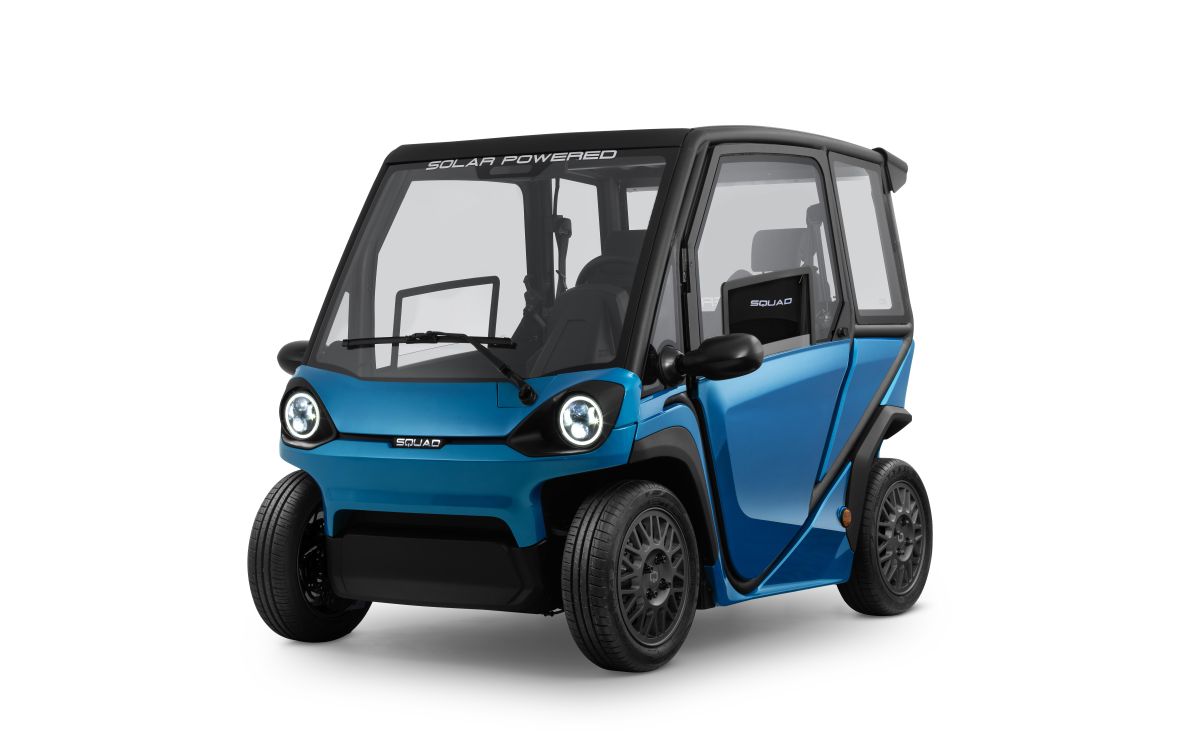
Squad Mobility, a Dutch company founded by Robert Hoevers and Chris Klok in 2019, showcased the Squad Solar City Car and solar buggy.
“Squad was designed for daily suburban mobility,” said Hoevers. “It’s easy to ride like a moped with the comfort and security of a vehicle.”
The two-person car is about 6.5 feet long and automatically charges its batteries with solar energy from the integrated solar panel on the roof. The solar panel can charge up to 13.6 miles extra range on sunny days in the Netherlands and up to 19.2 miles in Las Vegas. The vehicle is powered by 48-volt electric motors and batteries, which allows it to be used at night, in winter, or indoors, and can be charged at 220 volts or 110 volts.
The four swappable and portable batteries provide a range of 62 miles, excluding solar. The vehicle has removable doors, and the wheels and tires extend beyond the bodywork at the front and rear, functioning as bumpers.
Regarding repairability, Hoevers noted the vehicle’s bodywork is injection-molded plastic. “It can be easily replaced and the solar panel is handled the same as a front windshield,” he explained.
The Squad Solar Buggy is a special edition vehicle that can be configured for users.
Hoevers said there was considerable interest in the vehicles at CES.
“We are seeing a tremendous interest from the United States, specifically for markets such as golf cart communities, campuses, sharing platforms, hotels and resorts, amusement parks and inner-city services,” he said.
Indy Autonomous Challenge
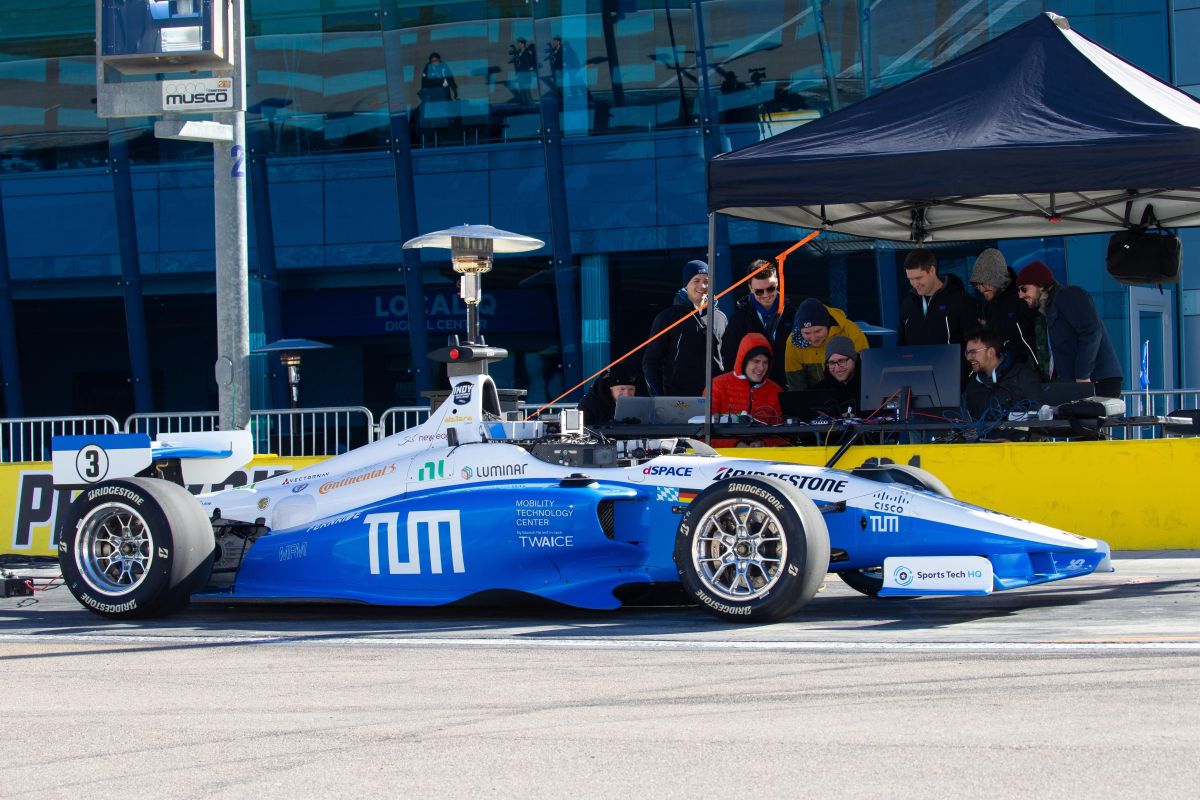
One of the highlights of CES was the Indy Autonomous Challenge (IAC), in which university teams from around the world compete in a series of challenges. The goal is to advance technology that can speed up the commercialization of fully autonomous vehicles and deploy ADAS to increase safety and performance. TUM Autonomous Motorsport from the Technical University of Munich won this year’s challenge, reaching speeds of more than 150 mph.
IAC said the TUM and KAIST teams raced side by side, two wide and wheel-to-wheel through turns one and two, getting as close as 5 feet from each other, which was a first for high-speed autonomous racing.
IAC also announced the launch of its Next Gen Autonomous Vehicle Platform, the IAC AV-24.
“This cutting-edge platform represents a significant leap forward in autonomous hardware and software technology,” said Paul Mitchell, IAC’s president. “After three years and more than 7,000 miles of high-speed racing, the IAC and its industry partners have evolved the robot inside the IAC AV-24 to become smarter and more capable, providing the world’s fastest autonomous racecar with increased functionality that will enable AI drivers to reach new levels of performance.”
The IAC engineering team collaborated with leading autonomous hardware and software providers to develop the robotics system, including Bridgestone, Cisco, Continental, dSPACE, Luminar, Marelli, New Eagle, NI, VectorNav and more.
The modular design of IAC AV-24's integrated robotics system allows for competent interchangeability and integration into other vehicle platforms.
Mitchell said the IAC AV-24 platform and related simulation tools will accelerate the development of AI Drivers capable of operating vehicles safely at speeds greater than 190 mph.
“The IAC has a goal to win over hearts and minds around the world regarding the promise of high-speed autonomous mobility and its potential to dramatically improve the safety and efficiency of mobility for all,” said Mitchell. “The IAC continues to push the boundaries of autonomous vehicle technology, fostering innovation and collaboration among industry, universities, and governments around the world.”
For more information about CES, visit the website.
First photo: During CES, ARaymond team members shared fastening, electrical connection and cleaning systems solutions for future vehicle needs.
Second photo: OWL Autonomous Imaging demonstrated its ADAS safety technology for nighttime pedestrian automatic emergency braking (PAEB).
Third photo: Squad Mobility’s Solar City Car is 6.5 feet long and automatically charges its batteries with solar energy from the integrated solar panel on the roof.
Fourth photo: Sony Honda Mobility (SHM) exhibited its prototype vehicle, AFEELA, which is currently in the development stage for mass production.
Fifth photo: The TUM team from the Technical University of Munich was the winner of the Autonomous Challenge during CES 2024. Photo credit Indy Autonomous Challenge.
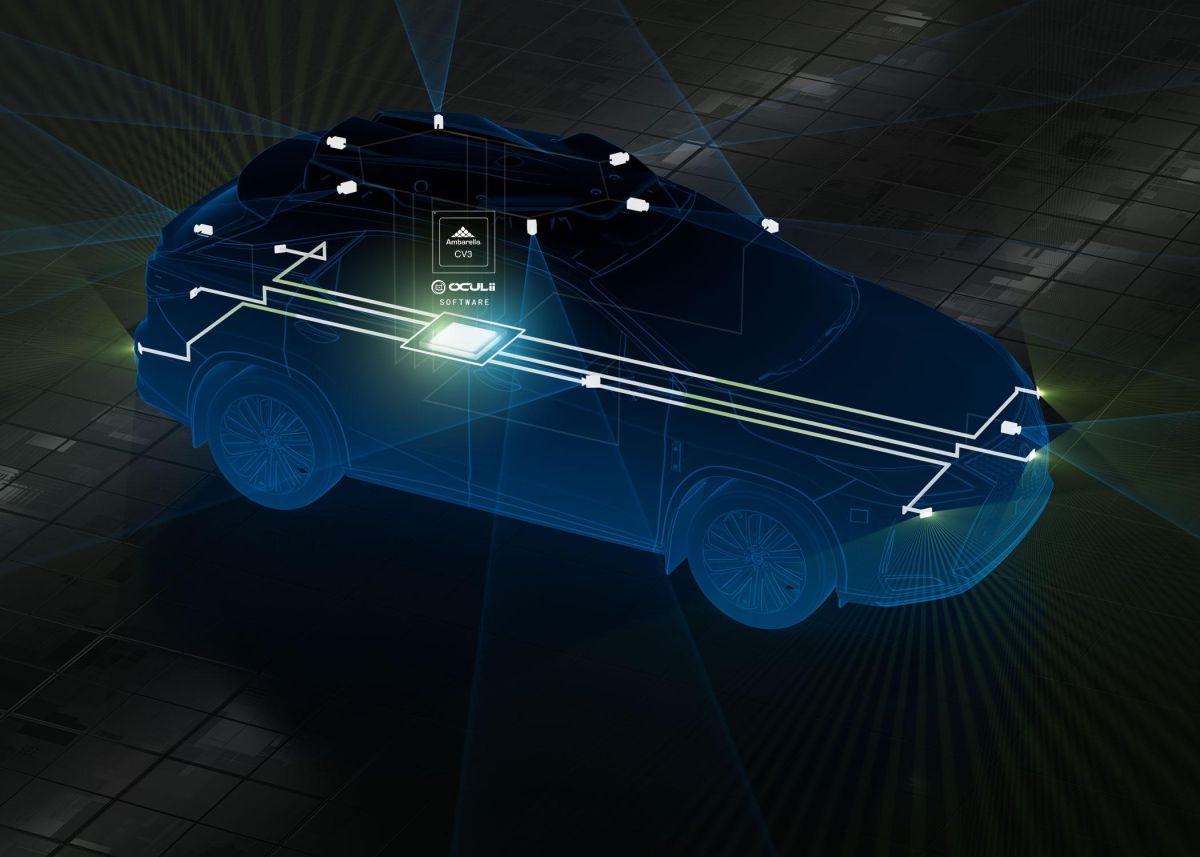










Stacey Phillips Ronak